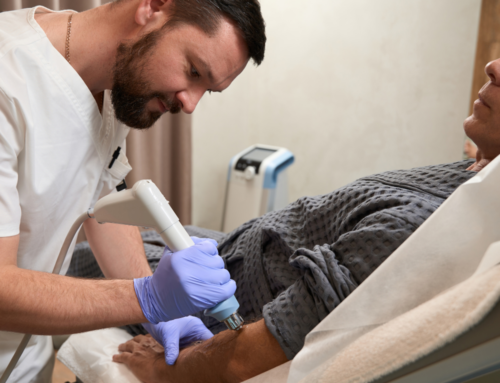Alzheimer’s disease (AD) was first described by German doctor Alois Alzheimer in 1906. Today five million Americans and up to twenty four million word wide are affected by this devastating disease. It is the most common form of dementia. Dementia is a general term which describes a loss in brain function including memory, language, judgment, orientation and overall function. One can have dementia without having the disease. AD is a progressive degeneration of brain tissue, marked by dramatic mental decline and progresses until death. Once a diagnosis is made, the course can last anywhere between a few years to up to twenty years. The incidence of AD increases as we age. One out of three eighty year olds have AD.
The course of AD is typical and has been staged so that doctors can monitor a patients decline. Stages one through seven describes progressive mental decline that starts with loss of intellectual function such as memory, comprehension and speech. Patients are unable to perform calculations, daily activities become difficult, symptoms are worse at night. One’s mood can change between anger, fear and apathy. Disorientation will cause patients to get lost. A patient’s physicality becomes affected. Abnormalities are seen in gait, coordination and control of bowel and bladder is lost. Patients ultimately become entirely dependent on a caregiver.
The only true physical diagnostic features of AD can only be observed after death. The brains of AD victims can be viewed under a microscope to confirm the diagnosis. In life, AD is diagnosed by ruling out all other possible causes of dementia. A large amount of beta-amyloid protein fragments accumulate between nerve cells and twisted tau proteins build up inside the nerve cells. These proteins appear to disrupt the normal function of nerve cells. These changes occur initially in the memory portions of the brain, then spread to other parts of the brain. This pattern of accumulation correlates with the clinical course typically seen.
There is currently no known modern medication offered by traditional medicine to truly cure AD. Two types of medications are available that slow the cognitive decline of AD and ease some symptoms of progession, but many find these drugs completely inadequate. Heavy metals such as aluminum and mercury have said to be associated with AD. Chelation therapy is a naturopathic technique used to clear these metals from the body.
Give us a Call at Peak Wellness! Whether you want to schedule an appointment or learn more about all of our other services we would be happy to assist!








